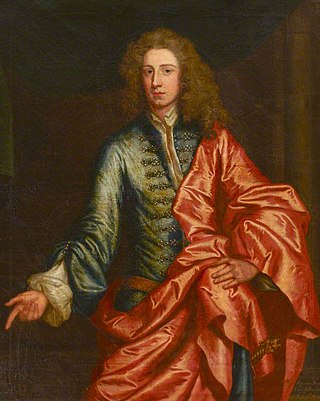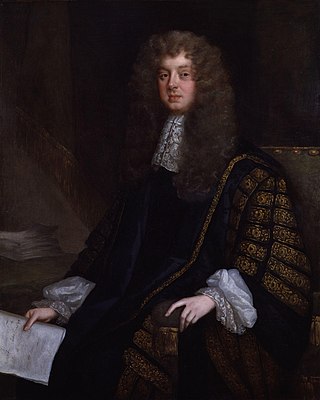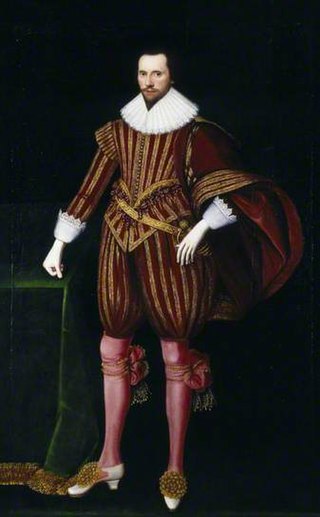Edward Seymour may refer to:

Duke of Somerset, from the county of Somerset, is a title that has been created five times in the peerage of England. It is particularly associated with two families: the Beauforts, who held the title from the creation of 1448, and the Seymours, from the creation of 1547, in whose name the title is still held. The present dukedom is unique, in that the first holder of the title created it for himself in his capacity of Lord Protector of the Kingdom of England, using a power granted in the will of his nephew King Edward VI.
William Russell may refer to:
John Seymour may refer to:

Evelyn Francis Edward Seymour, 17th Duke of Somerset, styled as Lord Seymour between 1923–1931, was a British Army officer, landowner, peer, and for eight years Lord Lieutenant of Wiltshire. He was also a baronet.

General Algernon Seymour, 7th Duke of Somerset was a British Army officer, Whig politician and peer who sat in the House of Commons from 1708 to 1722 when he was raised to the peerage as Baron Percy and took his seat in the House of Lords.

Hereford Cathedral School is a private, co-educational boarding and day school for pupils of ages 3 to 18 years, from nursery to sixth form. Its headmaster is a member of the Headmasters' and Headmistresses' Conference. The school's premises are next to Hereford Cathedral in Hereford.

Seymour is an English toponymic surname.
This is a list of people who have served as Custos Rotulorum of Wiltshire.

Sir Edward Seymour, 4th Baronet MP was a British nobleman, and a Royalist and Tory politician.

Algernon Percy, 1st Earl of Beverley,, styled Lord Algernon Percy between 1766 and 1786 and known as the Lord Lovaine between 1786 and 1790, was a British politician who sat in the House of Commons from 1774 to 1786 when he succeeded to the Peerage. He is the ancestor of the present Dukes of Northumberland.
Events from the year 1717 in Great Britain.

Admiral Robert Digby was a Royal Navy officer who also served briefly as a Member of Parliament (MP). He is the namesake of Digby, Nova Scotia.

Francis Seymour, 1st Baron Seymour of Trowbridge, of Marlborough Castle and Savernake Park in Wiltshire, was an English politician who sat in the House of Commons at various times between 1621 and 1641 when he was raised to the peerage as Baron Seymour of Trowbridge. He supported the Royalist cause during the English Civil War.
Francis Seymour may refer to:

James Scudamore, 3rd Viscount Scudamore, was an English landowner and Tory politician who sat in the House of Commons from 1705 to 1716.
Sir Samuel Tuke, 1st Baronet was an English officer in the Royalist army during the English Civil War and a notable playwright. He is best known for his 1663 play The Adventures of Five Hours, possibly co-authored by George Digby – the play was produced by the Duke's Company and later proved an influence on Richard Brinsley Sheridan's opera The Duenna.

Southcott is a surname of an ancient and prominent family from the English counties of Devon and Cornwall.
General Seymour may refer to:
This page is based on this
Wikipedia article Text is available under the
CC BY-SA 4.0 license; additional terms may apply.
Images, videos and audio are available under their respective licenses.










